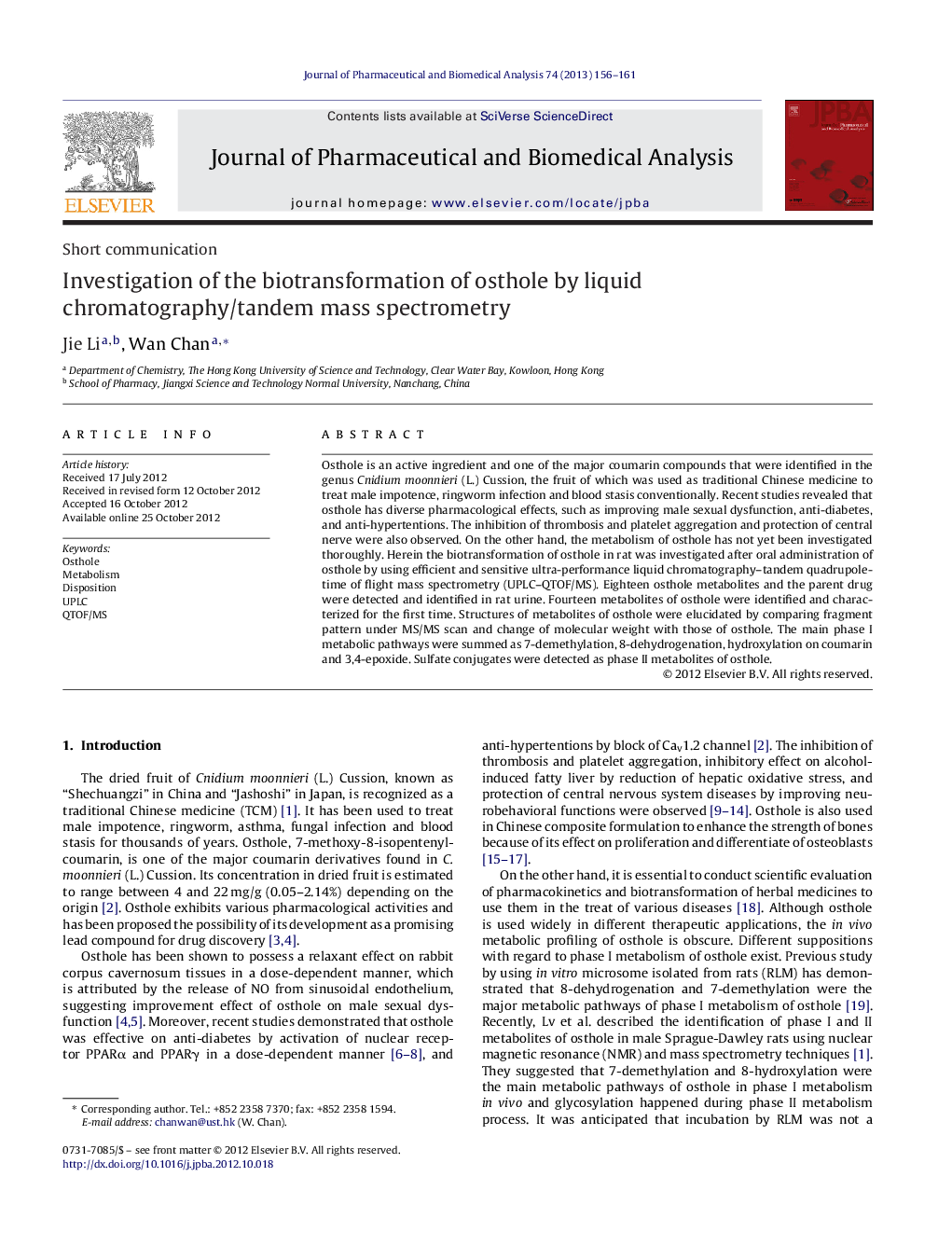| Article ID | Journal | Published Year | Pages | File Type |
|---|---|---|---|---|
| 1222079 | Journal of Pharmaceutical and Biomedical Analysis | 2013 | 6 Pages |
Osthole is an active ingredient and one of the major coumarin compounds that were identified in the genus Cnidium moonnieri (L.) Cussion, the fruit of which was used as traditional Chinese medicine to treat male impotence, ringworm infection and blood stasis conventionally. Recent studies revealed that osthole has diverse pharmacological effects, such as improving male sexual dysfunction, anti-diabetes, and anti-hypertentions. The inhibition of thrombosis and platelet aggregation and protection of central nerve were also observed. On the other hand, the metabolism of osthole has not yet been investigated thoroughly. Herein the biotransformation of osthole in rat was investigated after oral administration of osthole by using efficient and sensitive ultra-performance liquid chromatography–tandem quadrupole-time of flight mass spectrometry (UPLC–QTOF/MS). Eighteen osthole metabolites and the parent drug were detected and identified in rat urine. Fourteen metabolites of osthole were identified and characterized for the first time. Structures of metabolites of osthole were elucidated by comparing fragment pattern under MS/MS scan and change of molecular weight with those of osthole. The main phase I metabolic pathways were summed as 7-demethylation, 8-dehydrogenation, hydroxylation on coumarin and 3,4-epoxide. Sulfate conjugates were detected as phase II metabolites of osthole.
► The in vivo metabolism of osthole was investigated using UPLC coupled to QTOF MS. ► Fourteen metabolites of osthole, including isomers, were identified and characterized in dosed rat urine for the first time. ► Phase I metabolism pathways of osthole consist of 7-demethylation, 8-dehydrogenation, hydroxylation on coumarin and 3,4-epoxide. ► Sulfate conjugates were detected as phase II metabolites of osthole.
